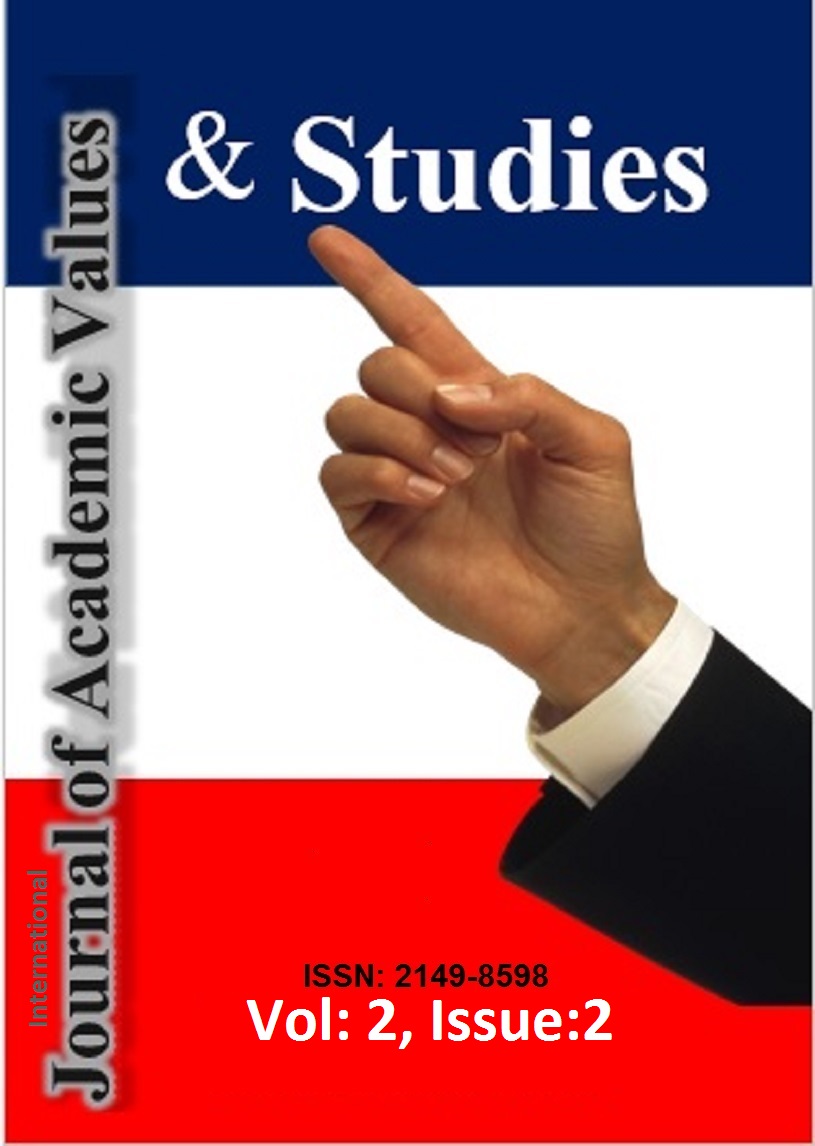Sanayileşme, Şehirleşme ve Çevre Kirliliği Arasındaki İlişki: Türkiye İçin Bir ARDL Sınır Testi Yaklaşımı
Author :
Abstract
Çevre sorunları, günümüzde pek çok ulusun en önemli mücadele alanlarından birini oluşturmaktadır. Ülkeler sanayileşme ve silahlanmada olduğu gibi şehirleşmede de büyük ölçeği hep ön planda tutmakta veya tutmak durumunda kalmaktadır. Böylece, şehirler hem yatay ve hem de dikey büyüme tehdidiyle karşı karşıya kalmaktadır. Her iki durumun sonucu fiziksel ve sosyal çevreye zarar vermektedir. 1980 yılından itibaren sanayileşmedeki hızlı ilerleme sonucunda sanayide çalışma imkânı artmış ve köyden kente göç hızlanmıştır. Şehirlerin kalabalıklaşması sonucunda çarpık kentleşmeyle birlikte var olan çevre düzeni bozulmaya başlamıştır. Çevre düzenlemesine uyum sağlamayan yerleşmeler ortaya çıkmaya başlamıştır. Ayrıca sanayileşmenin artmasıyla birlikte çevreye yayılan zehirli gazların miktarı sürekli artmaktadır. Türkiye’de şehirleşmenin artışıyla birlikte ortaya çıkan yanlış şehirsel büyüme ve etkileri çevreye karşı duyarlılığın artmasıyla birlikte gitgide önem kazanmaktadır. Bu çalışmanın amacı şehirleşme oranı ile çevre kirliliği arasındaki ilişkiyi teorik olarak açıklayarak, ekonometrik analiz ile desteklemektir. Ayrıca elde edilen sonuçlara yönelik politika önerilerinde bulunmak amaçlanmıştır. Araştırma sonucunda şehir nüfusundaki artış oranı ve enerji kullanımı ile karbondioksit emisyonu arasında anlamlı ve pozitif ilişki bulunmuştur, sanayi üretim endeksi ile karbondioksit emisyonu arasında anlamsız bir ilişki ortaya çıkmıştır.
Keywords
Abstract
Environmental problems are one of the most important struggles of many nations today. Just as the countries usually prioritize or have to prioritize the big scale in urbanization as in industrialization and arming, Thus, cities face the threat of both horizontal and vertical growth. The end of both situations is harmful to the physical and social environment. Since 1980s, as a result of rapid industrialization, the opportunity to work in the industry has increased and migration from village to city has accelerated. As a result of cities becoming crowded, the existing environmental has started to deteriorate with unplanned urbanization. Settlements that do not comply with environmental regulations have begun to emerge. In addition, with the increase in industrialization, the amount of toxic gases emitted to the environment has constantly started to increase. Unplanned urbanization and its effects emerging as a result of the increase of urbanization in Turkey have gradually become important because of the increase of sensitivity to the environment. The aim of this study is to explain the relationship between urbanization and environmental pollution wirh econometric analysis. It is also aimed to make policy recommendation on the results. The research revealed a significant and positive correlation between the increase in urban population and the use of energy and carbon dioxide emissions, and a meaningless correlation between the Industrial Production Index and carbon dioxide emissions.
Keywords
- Alper, F. Ö. & Alper A.E. (2017). "Karbondioksit Emisyonu, Ekonomik Büyüme, Enerji Tüketimi Iliskisi: Türkiye Için Bir ARDL Sinir Testi Yaklasimi", Sosyoekonomi 25.33 (2017): 145.
- Bahmanı-Oskooee, M. (2001). “How stable is M2 money demand function in japan?”, Japan and the World Economy. 13(2001), 455-461.
- Brown, R.L. & J. Durbin & J.M. Evans (1975). “Techniques for testing the constancy of regression relationships over time”, Journal of the Royal Statistical Society, Series B (Methodological), 37(2): 149-192.
- Chow, G. C. (1960). “Tests of equality between sets of coefficients in two linear regressions”, Econometrica, 28(3), 591-605.
- Çetin M.F. & Şeker F.(2014). “Ekonomik büyüme ve dış ticaretin çevre kirliliği üzerindeki etkisi: Türkiye için bir ARDL sınır testi yaklaşımı”, Yönetim ve Ekonomi, Celal Bayar Üniversitesi İktisadi ve İdari Bilimler Fakültesi Dergisi, 2014, 21.2.
- Deniz, M. H. (2010). “Sanayileşme Perspektifinde Kentleşme ve Çevre Kirliliği”, Coğrafya Dergisi, (19):95-105.
- Dogan, E. & Turkekul, B. (2016). “CO2 Emissions, Real Output, Energy Consumption, Trade, Urbanization and Financial Development: Testing The EKC Hypothesis for The USA”, Environmental Science and Pollution Research, 23(2):1203-1213.
- Fosu, O. A. E. & Josph, M. F. (2006), “Aggregate import demand and expenditure components in Ghana: An econometric analysis”, MPRA Paper, 599: 214-230.
- Halıcıoğlu, F. (2009). “An Econometric Study of CO2 Emissions, Energy Consumption, İncome and Foreign Trade in Turkey”, Energy Policy, 37(3):1156-1164.
- Kızılkaya, O.; Sofuoğlu, E. & Çoban, O. (2016). “Ekonomik Büyüme, Enerji Tüketimi ve Çevre Kirliliği Analizi: Türkiye Örneği”, 6(2):256-269.
- Meadows, D. H. & Meadows, D. L. (1978). Ekonomik Büyümenin Sınırları (Çev./Kemal Tosun) İstanbul Üniversitesi Yayını, İstanbul.
- Narayan, P. K. & Smyth, R. (2006). “What Determines Migration Flows From Low-İncome Countries? An Empirical İnvestigation of Fiji-U.S Migration 1972-2001”, Contemporary Economic Policiy, 24(2):332-342.
- Öztürk, İ. & Acaravcı, A. (2010). “CO2 Emissions, Energy Consumption and Economic Growth in Turkey”, Renewable and Sustainable Energy Reviews, 14(9):3220-3225.
- Pata, U. K. (2017). “The Effect of Urbanization and Industrialization on Carbon Emissions in Turkey: Evidence From ARDL Bounds Testing Procedure. Environmental Science and Pollution Research”, Environmental Science and Pollution Research, 25(8): 7740-7747.
- Paul, S. & Bhattacharya, R. N. (2004). “CO2 Emissions From Energy Use in India: A Decomposition Analysis”, Energy Policy, 32(5):585-593.
- Pesaran, M. H.; Shin. Y. & Smith, R. J. (2001). “Bounds Testing Approaches to The Analysis of Level Relationship”, Journal of Applied Econometrics, 16(3):289-326.
- Shahbaz, M.; Jam, F. A.; Bibi, S. & Loganathan, N. (2016). “Multivariate Granger Causality between CO2 Emissions, Energy Intensity and Economic Growth in Portugal: Evidence from Cointegration and Causality Analysis”, Technological and Economic Development of Economy, 22(1):47-74.
- Soytas, U. & Sarı, R. (2009). “Energy Consumption, Economic Growth, and Carbon Emissions: Challenges Faced by an EU Candidate Member”, Ecological Economics, 68(6):1667-1675.
- IBRD-IDA (2018). The World Bank, Erişim Tarih:19.09.2018, http://databank.worldbank.org.
- TÜİK (2018). Türkiye İstatistik Kurumu, Erişim Tarih:19.09.2018, tüik.gov.tr.
